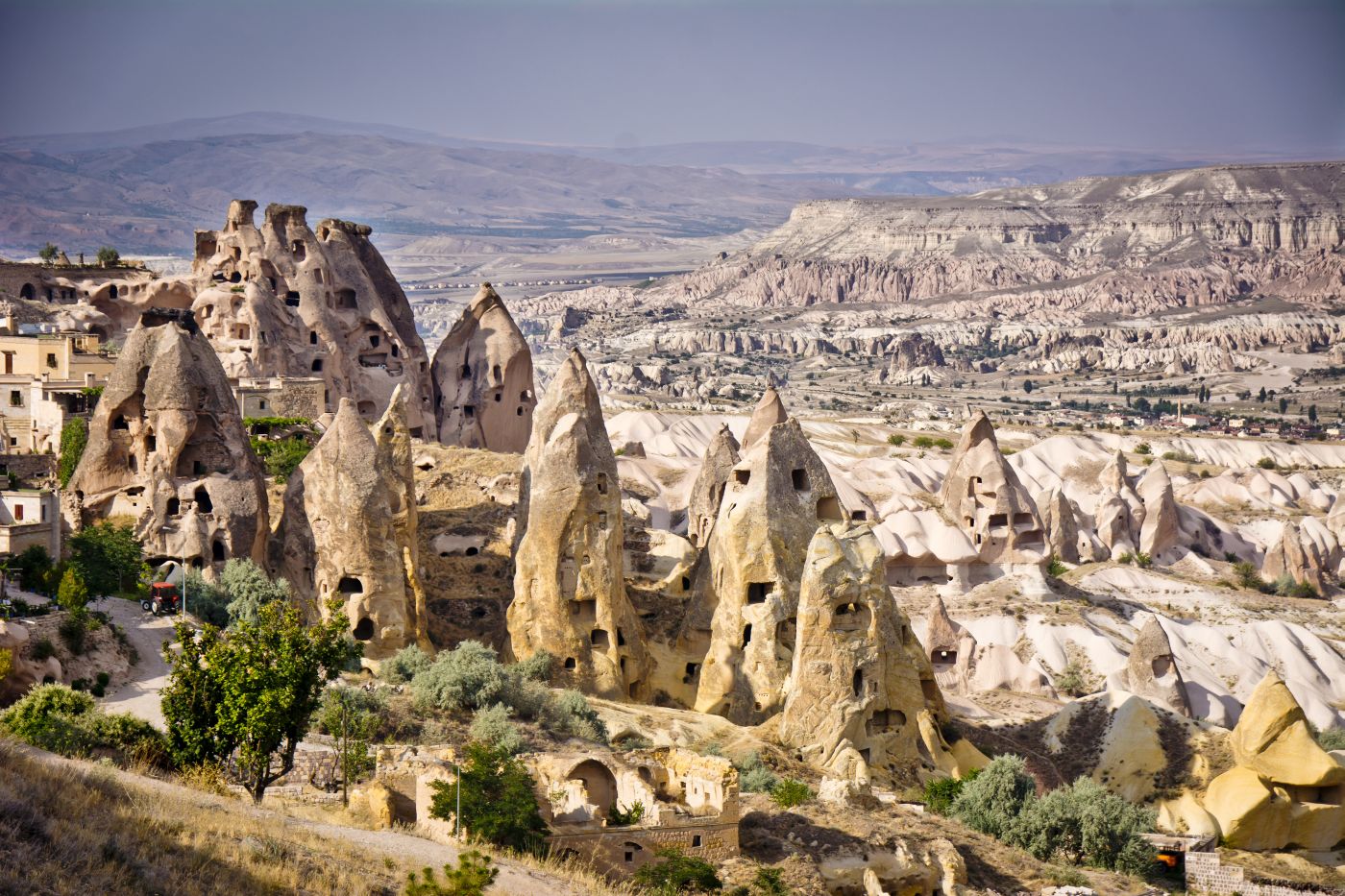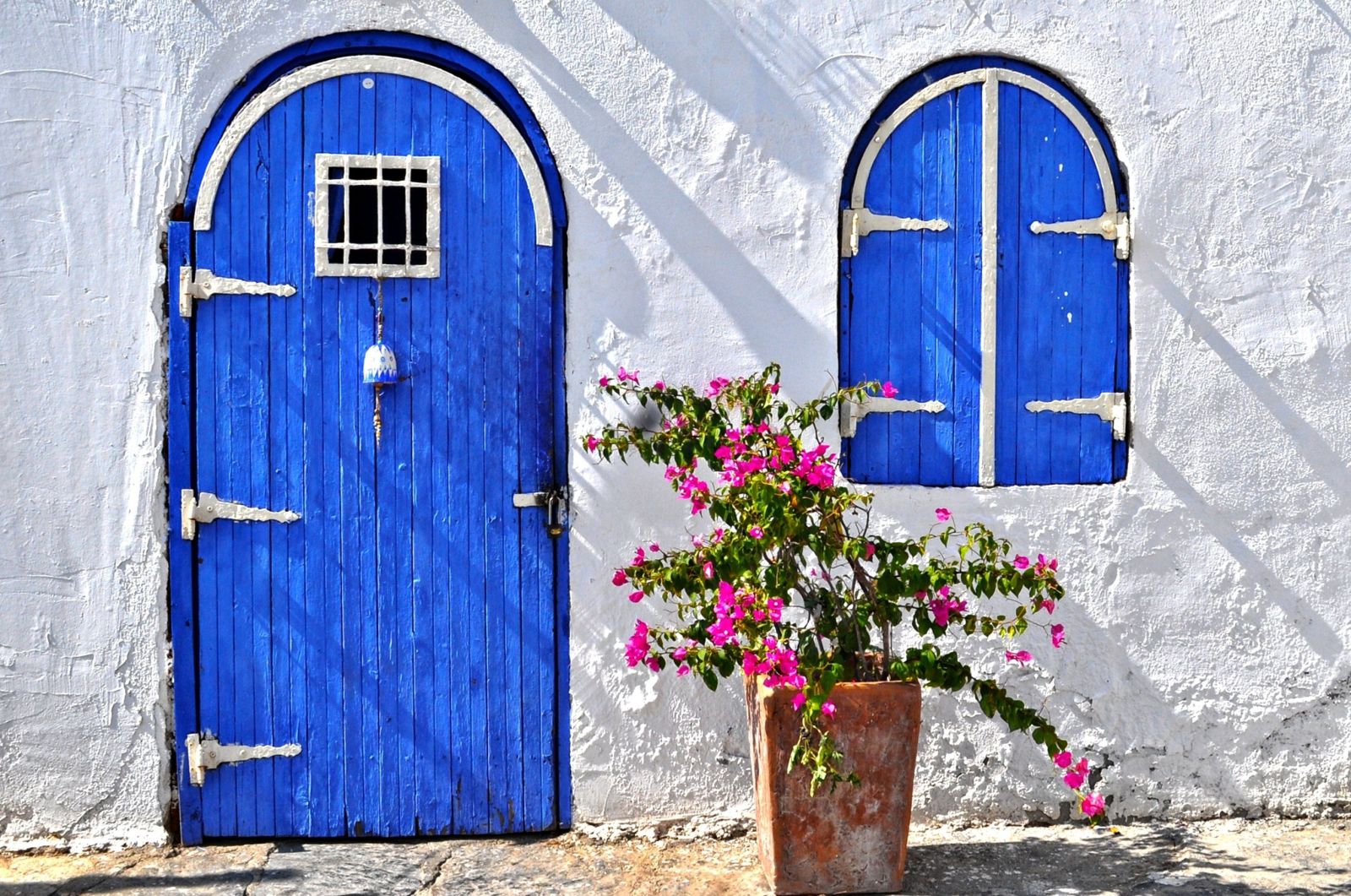With a stunning Aegean coastline and a balmy climate to match, Turkey is one of the world’s most popular destinations, especially from April to November. Mix days on the beach or your private liveaboard boat with visits to some of its 19 World Heritage Sites, or check out the year-round delights of its largest city, Istanbul.
ISTANBUL

Istanbul may no longer be Turkey’s capital – that honour has belonged to Ankara since 1923 – but it certainly retains all the trappings of one. This captivating, sprawling city on the Bosphorus Strait, with one foot in Europe and the other in Asia, is bursting at the seams with not-to-be-missed historic sites. The Romans founded what they called Constantinople here in 330 AD, and there are traces of their open-air Hippodrome in what is now Sultanahmet Square. The iconic Hagia Sophia, now a mosque, began life in the 6th century as a Byzantine church, while the nearby UNESCO-listed Blue Mosque is an imposing example of 16th-century Islamic architecture. Delve into the lavish lifestyle of the Ottoman emperors at the Topkapi Palace, haggle your way through the 4,000 and more shops of the Grand Bazaar and check out the elegant arcades, vintage trams and historic patisseries on atmospheric Istiklal Street. Base yourself at the Mandarin Oriental Istanbul, an oasis of calm by the Bosphorus, just steps from the heart of the action.
BACK TO TOP
CAPPADOCIA

Cappadocia, in the heart of Turkey, is arguably the country’s most extraordinary destination. Volcanic explosions 30 million years ago threw out mud and ash that turned into a soft stone called tuff, which eroded over time into fanciful shapes, creating an otherworldly landscape. Taking their cue from nature, generations of inhabitants from the Bronze Age onwards carved out cave houses, churches and even underground cities from the rock. At the area’s hub in Göreme, the open-air museum (and World Heritage Site) encapsulates a cluster of 30 frescoed rock-cut churches from the 9th to the 11th century. Take in the unique scenery from above with a sunrise flight in a hot-air balloon or immerse yourself in it with a tranquil walk through Rose Valley, which is particularly beautiful in the golden light of late afternoon. Stay at Argos in Cappadocia, a subterranean former monastery, which is anything but primitive – the Splendid Suites, with private indoor pools, more than live up to their name.
BACK TO TOP
GALLIPOLI, TROY AND THE DARDANELLES

Tucked into Turkey’s northwestern corner, the Dardanelles Strait – or Hellespont in Classical times – connects the Sea of Marmara and the Aegean, giving it a strategic importance that has defined its history. Its western shore is the Gallipoli (Gelibolu in Turkish) peninsula, the site of one of the most brutal battles of the First World War, when the allied forces suffered a heavy defeat at the hands of the Ottoman troops. At Gelibolu Peninsula National Park, statues, cemeteries and memorials commemorate the fallen – almost half a million men – from both sides, while remnants of sunken ships and trenches help to paint a picture of the horrors of that time. On the Asian mainland across from the southern tip of Gallipoli, a much earlier war is the focus of the well-preserved UNESCO-listed ruins of Troy, a famous mythical city to the Ancient Greeks. There are nine layers of archaeological discoveries dating back to the Early Bronze Age to explore here, along with intriguing evidence that the legend of the Trojan War may not be pure invention.
BACK TO TOP
BODRUM

Water babies will be in their element in Bodrum in southwestern Turkey. This peninsula nudging into the Aegean Sea is blessed with Blue Flag beaches for lazy days and tranquil dips, while the south-coast bays, islands and islets are a magnet for scuba divers. There are resorts of varying sizes and liveliness dotted around the coast, including Gümbet, Bitez, Torba and the long-established port city that gives the area its name. Discover its long and fascinating past at the ruins of the Mausoleum at Halicarnassus – the old name for Bodrum – a once-fabulous marble tomb that was one of the wonders of the ancient world. The better-preserved 15th-century castle of St Peter is an impressive example of Gothic architecture, with fortified walls that include fragments of the mausoleum; it also houses the award-winning Museum of Underwater Archaeology and its collection of finds from ancient shipwrecks. If you’re after a stylish venue for a beach stay in Bodrum, the METT combines first-class facilities with a boutique touch.
BACK TO TOP
IZMIR AND THE ÇESME PENINSULA

Hugging a sheltered bay on the Aegean coast, İzmir is Turkey’s third city after Istanbul and Ankara. This economic powerhouse boasts a rich history: founded by the Greeks, it was conquered in succession by the Romans, the Macedonians and the Ottoman Empire. Between exploring mosques, bazaars and authentic cafés, you’ll encounter reminders of these past rulers everywhere, from the open-air museum on the site of the Roman agora to the Alexandrine castle. Due west, the Çesme Peninsula’s eponymous main settlement offers charming shopping streets and squares cooled by sea breezes, a waterfront Ottoman castle overlooking the glossy marina, and beautiful Ilıca Beach, one of the country’s finest. To the south of İzmir is one of the region’s most important archaeological areas: the expansive ruins of the ancient city of Ephesus, built 3,000 years ago on the site of an even older settlement. Walk along its paved streets past well-preserved buildings such as the library of Celsus and the frescoed homes of wealthy former residents.
BACK TO TOP
DATÇA PENINSULA

Life moves at a gentler pace on the Datça Peninsula, a 60-mile spit of land jutting out into the sea to the west of Marmaris in southwest Turkey. Its unspoiled coastline, studded with tucked-away bays and coves, has won it a place on many gulet-holiday itineraries. On land, you can soak up the peace of its landscape of pine-clad hills and olive groves on the Carian Trail, a long-distance footpath which winds its way around the perimeter, dipping down to deserted beaches. For a change of scene, the vibrant craft market of Datça Town is bursting with unique handmade souvenirs, while the characterful cobbled lanes of Eski Datça (Old Datça) are lined with quaint stone houses turned cool cafés. Fans of ancient ruins will be in their element among the temples, columns and amphitheatre of Knidos, once a thriving Hellenic city on the peninsula’s western tip. Stay at the wonderfully luxurious D-Maris Bay in a hillside setting overlooking the sea.
BACK TO TOP
TURQUOISE COAST: GÖCEK, KALKAN AND KAŞ

The aptly named Turquoise Coast, also known as the Turkish Riviera, has an embarrassment of riches when it comes to charming resort towns with pristine beaches, natural beauty and a dash of past glories. Picturesque Göcek’s historic harbour and its numerous marinas are popular jumping-off points for sailing adventures, and its sheltered bays provide ideal conditions for waterskiers of all abilities. Give yourself time to soak up its delights with a stay at the D-Resort Göcek, which is set in attractive gardens a short stroll from its own private beach and marina. To the west, Dalyan offers Lycian rock tombs, thermal mud baths and a protected beach where loggerhead turtles nest. To the other side of Göcek in the shadow of the Taurus Mountains, Kalkan is a bit of an insider’s secret, with a glorious Old Town wrapped around a harbour bobbing with wooden boats plus scenic walks on the doorstep. There’s a similarly off-the-main-tourist-trail feel to Kaş, which attracts artists, scuba divers and sun worshippers alike.
























